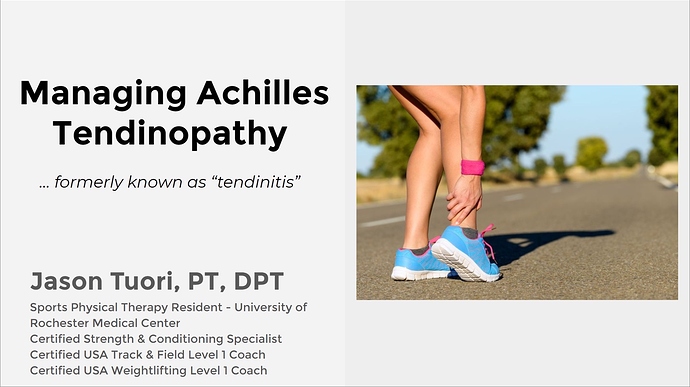In our ongoing FLRC Presents series, physical therapist Jason Tuori is moving on from runner’s knee (watch now, if you missed it live) to the second-most common injury among runners, Achilles tendinopathy, or, as it used to be called, Achilles tendinitis. If you’ve ever had pain on the back of your heel, where the Achilles tendon connects your calf muscles to your heel bone, you know how debilitating it can be.
In this free Zoom presentation on Monday, November 23rd at 6:30 PM, Jason will explain the relevant anatomy of the lower leg, how you can differentiate Achilles tendinopathy from other conditions that cause pain in the foot and ankle area, what commonly causes it, how you can treat it, and how you can avoid it in the first place.
As always, we’ll have time for questions after the presentation, and Jason will also answer follow-up questions on the FLRC forum. We’ll post a recording of the talk the next day for those who have schedule conflicts with the live presentation. Sign up today!
Along with a graduate degree in Physical Therapy, Jason is a certified Strength & Conditioning Specialist, a certified USA Track & Field Level 1 Coach, a certified USA Weightlifting Level 1 Coach, and an accomplished runner and triathlete who has dealt with his own share of injuries.
The presentation is free to attend, but registration is required. You’ll receive the Zoom connection details in your confirmation email, which will also prevent the possible Zoombombing of the talk by random trolls.

